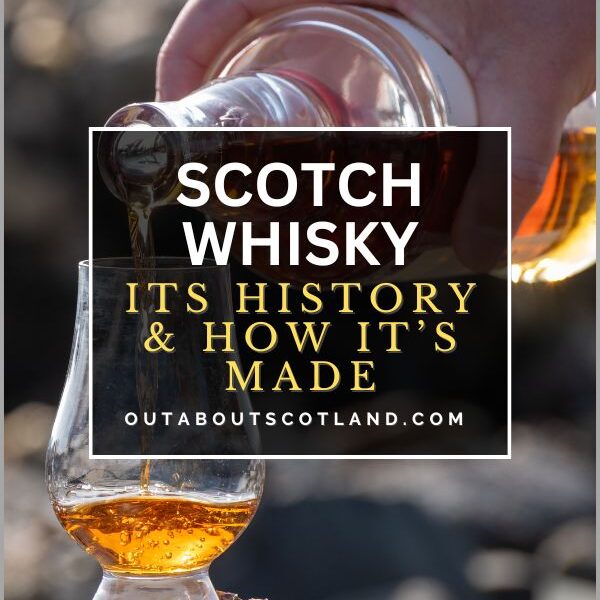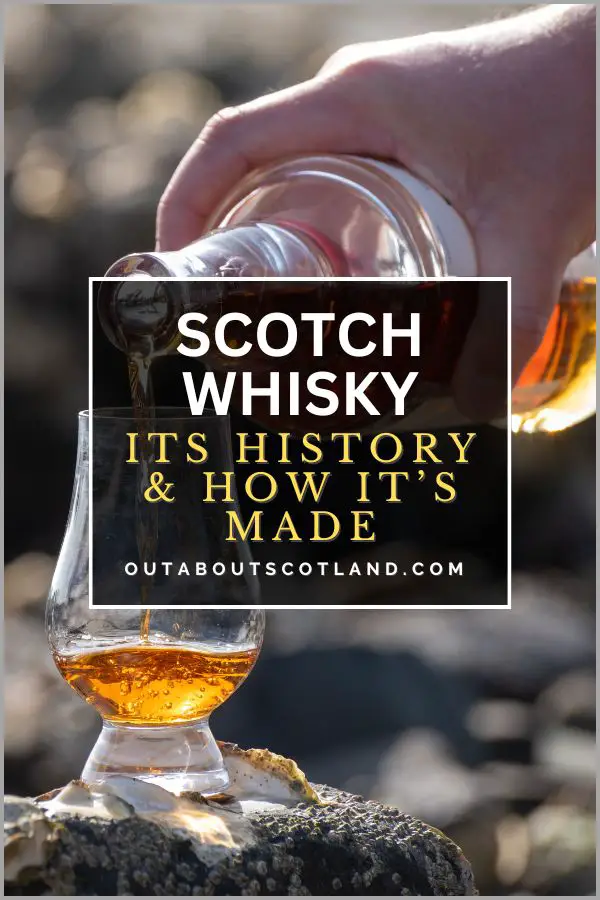Scotch whisky has a deep-rooted history that’s as rich and complex as its flavour. Originating from makeshift stills and techniques introduced hundreds of years ago from Ireland, the ‘water of life’ has grown to become a significant part of modern Scotland’s cultural heritage and is now a key contributor to its economy.
In this article, we’ll explore the history of Scotch whisky before taking a look at its production and how it has developed into a global phenomenon. So, pour yourself a dram and join me as I delve into the captivating world of this iconic spirit.
The History of Scotch Whisky
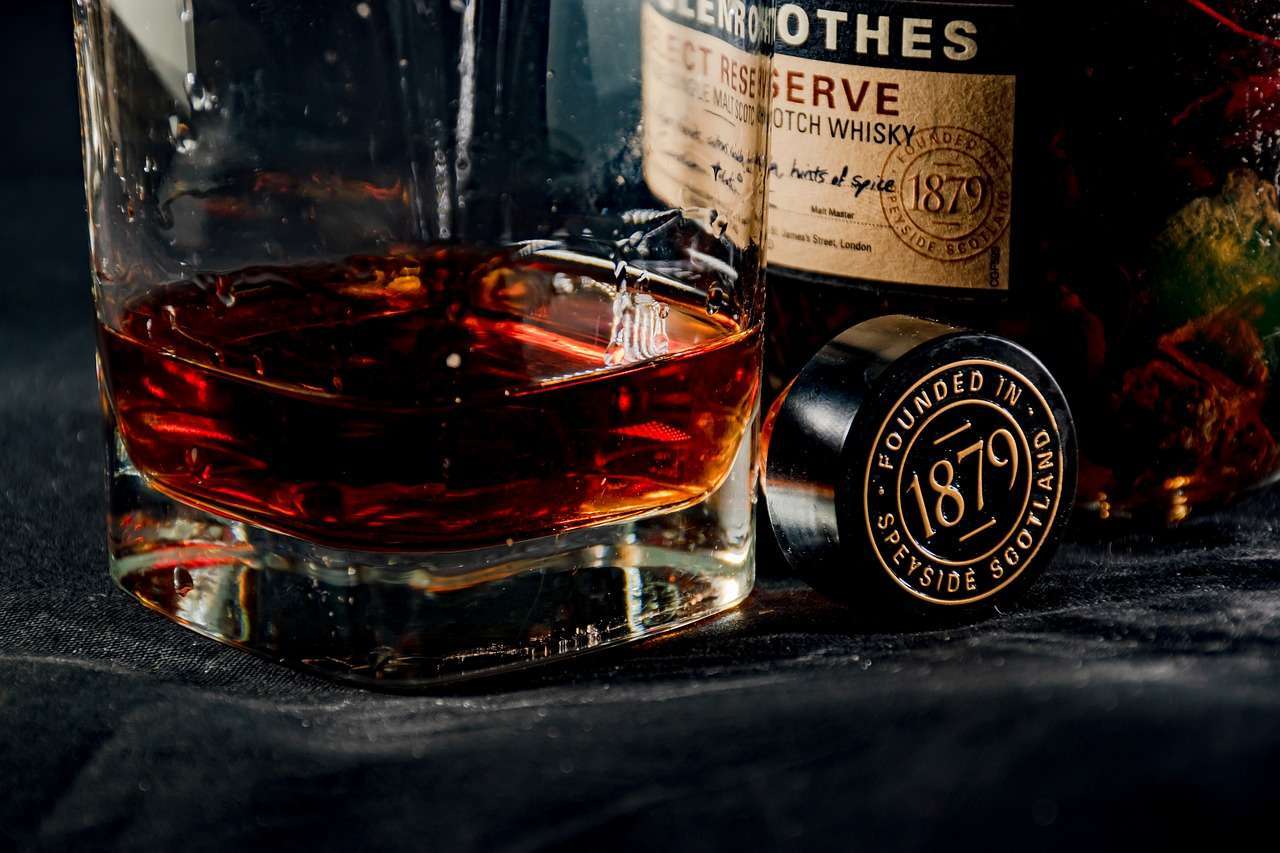
While the very first origins of whisky production in Scotland are difficult to determine, the distillation process was likely brought over from Ireland by travelling monks who settled throughout Scotland in the Middle Ages. The first known record of whisky-making that’s similar to our modern manufacturing techniques is documented in the Records of Royal Income and Expenditure from 1494. In the document, malt was requested to be used to make aquae vitae (the Latin phrase for ‘water of life’), or uisge beatha to use the native Gaelic term.
The quantity of malt specified in these historical records indicates that a sizeable quantity of 1,500 bottles of whisky would have been produced that year, which suggests the distillation process was already well-established in Scotland by the end of the 15th century.
Whisky distilling thrived throughout Scotland due to the huge amount of grain the country can produce courtesy of its climate, and thanks to the remoteness of the Highlands, it was possible for distillers to build secret stills hidden far from the prying eyes of government tax officials.
In fact, the size of the illegal Highland whisky industry meant that by the late 18th century, black market whisky was one of the biggest exports from the region, even though tax officers battled a constant war to seize and destroy the illicit distilleries. The scale of these operations can be seen in government records from the time which state that in 1782, illegal whisky production led to over 1,000 seized contraband stills from the Highlands alone.
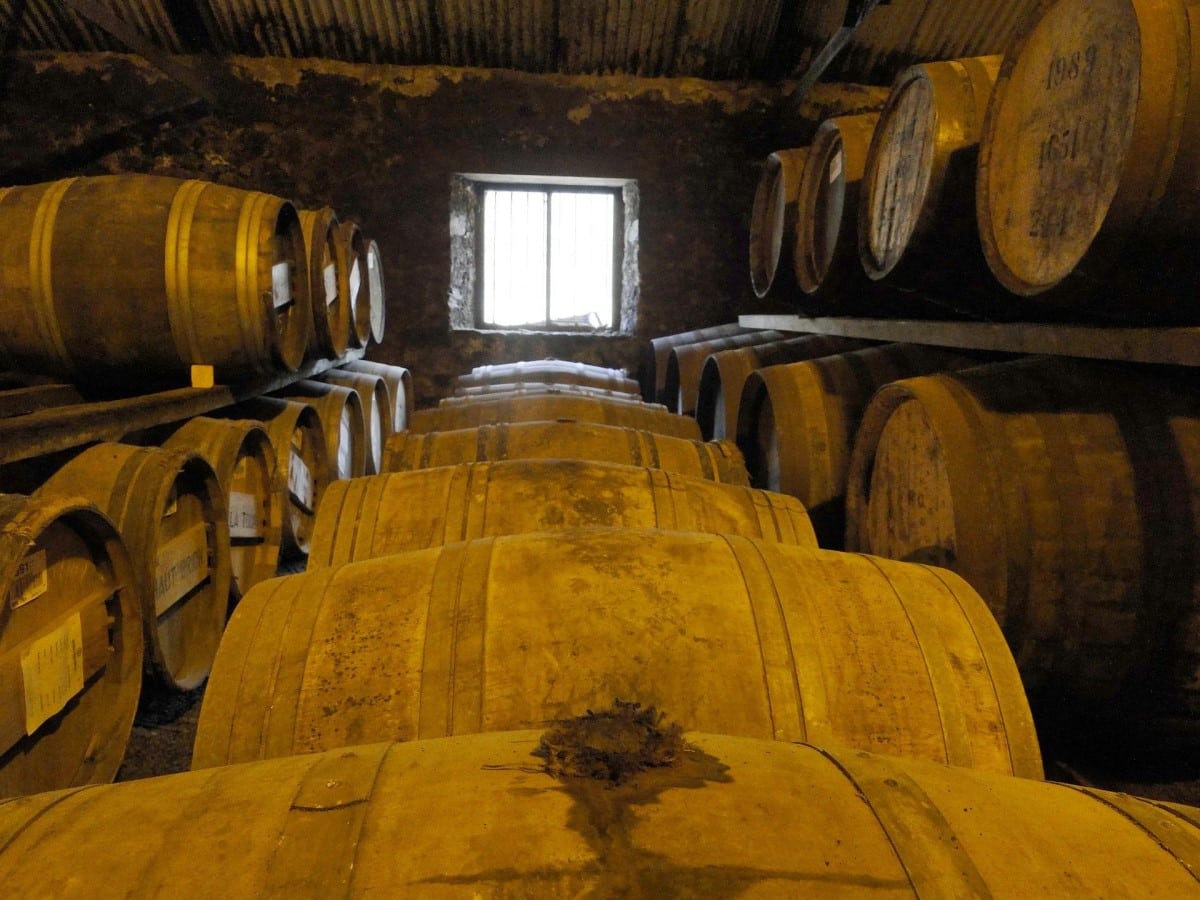
Despite the incredible amount of equipment that was captured, authorities claimed that it was just a small percentage of all the illegal distilleries that were suspected to be hidden away deep in the mountains. To combat this loss in tax revenue, in 1823 the government eased the tax restrictions that had previously been placed on licenced distilleries, and at the same time made punishments for illegal distilleries much harsher.
This led to a new era of Scotch whisky production, and government records show that after the tax restrictions were lightened in 1823, the amount of Scotch produced the following year almost doubled.
As the methods and techniques used to produce whisky improved so did the quality of the final product, and by the late 19th century Scotch whisky was enjoying record export success across Europe and beyond. With so many high-quality variations available from Scotland’s many whisky-producing regions, a new breed of connoisseur appeared with an appreciation for what had once been seen as the poor man’s alcoholic drink.
Today, whisky plays a significant role in Scotland’s economy. It’s one of the country’s most prominent exports and contributes substantially to its GDP. Here’s a detailed look at its importance:
- Major Export: Scotch whisky accounts for over 20% of all UK food and drink exports, making it a significant player in the international market. It’s exported all over the world with key markets being the USA, France, and Asia.
- Employment: The industry employs approximately 11,000 people in Scotland, and an estimated 40,000 jobs across the UK are dependent on the whisky industry. These jobs range from distillery employees to those in supporting sectors like tourism, packaging, and logistics.
- Tourism: Whisky distilleries attract around 2 million visitors each year, which contributes greatly to the country’s tourism industry. Tourists not only visit distilleries but also spend money on accommodation, food, and other local attractions.
- Tax Revenue: Scotch whisky production also generates significant tax revenue for the UK government. Currently, the industry contributes nearly £5 billion in taxes.
- Rural Development: Many Scotch whisky distilleries are located in rural areas, providing vital employment and contributing to local economies, especially on islands like Islay which have few other means of income other than seasonal tourism. The whisky industry also supports local farmers due to the need for barley and other grains.
How Is Scotch Whisky Made?
For a Scotch whisky to be called a single malt it has to pass two criteria. First, it can only be made from malted barley, and second, it has to be distilled in pot stills in one single distillery. While many modern distilleries contract out the malting of the barley to third parties, there are still a few that choose to perform their own malting on-site, although it’s a time-consuming task that’s very labour-intensive
The whisky is usually distilled twice (a few distilleries prefer triple filtering depending on where they’re based) before it’s matured in oak casks for a minimum of three years, after which it’s bottled and sold to eagerly awaiting consumers.
Let’s take a look at the whole procedure of making Scotch in more detail.
Step 1. Malting the Barley
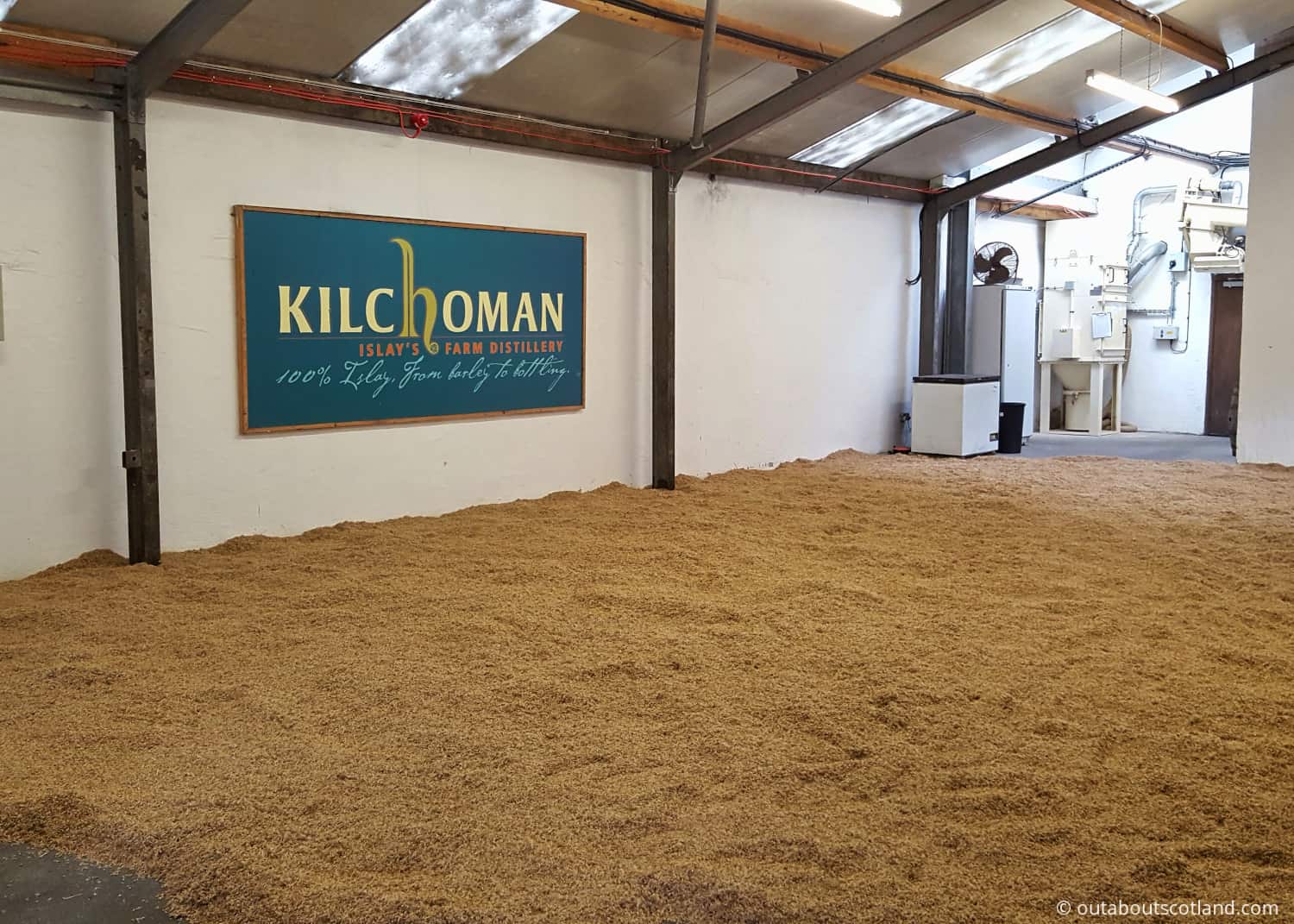
As you probably already know, alcohol is made by fermenting sugar, hence the reason wine is made from grapes with a high sugar content. But whisky is made from barley grain, so where does the sugar come from?
Barley has an extremely high starch content, and as you might remember from your school science class, starch is simply sugar molecules stretched into long chains. Distillers, therefore, need to release the sugar from the starch, which is done in the process of malting.
The first stage is to steep the barley grain in water and then spread it out across a malting floor. As the grains start to germinate they begin to alter chemically which allows the sugar locked inside the grain to be released. The grains have to be turned over at regular intervals so they germinate equally in a process that was traditionally done by hand but is now almost entirely done by machines.
Germination of the grains takes around 5 days, at which point they’re spread onto grids inside a hot kiln to dry out in a critical process that plays a big part in how the finished single malt will taste.
The kilns are heated from below with fire, and as the heat passes over the grains, steam rises and escapes through a pagoda roof above the kiln. If peat is added to the fire (as happens with most Islay whisky) the grains take on a characteristically smoky flavour which makes its way into the final product.
Step 2. Fermentation
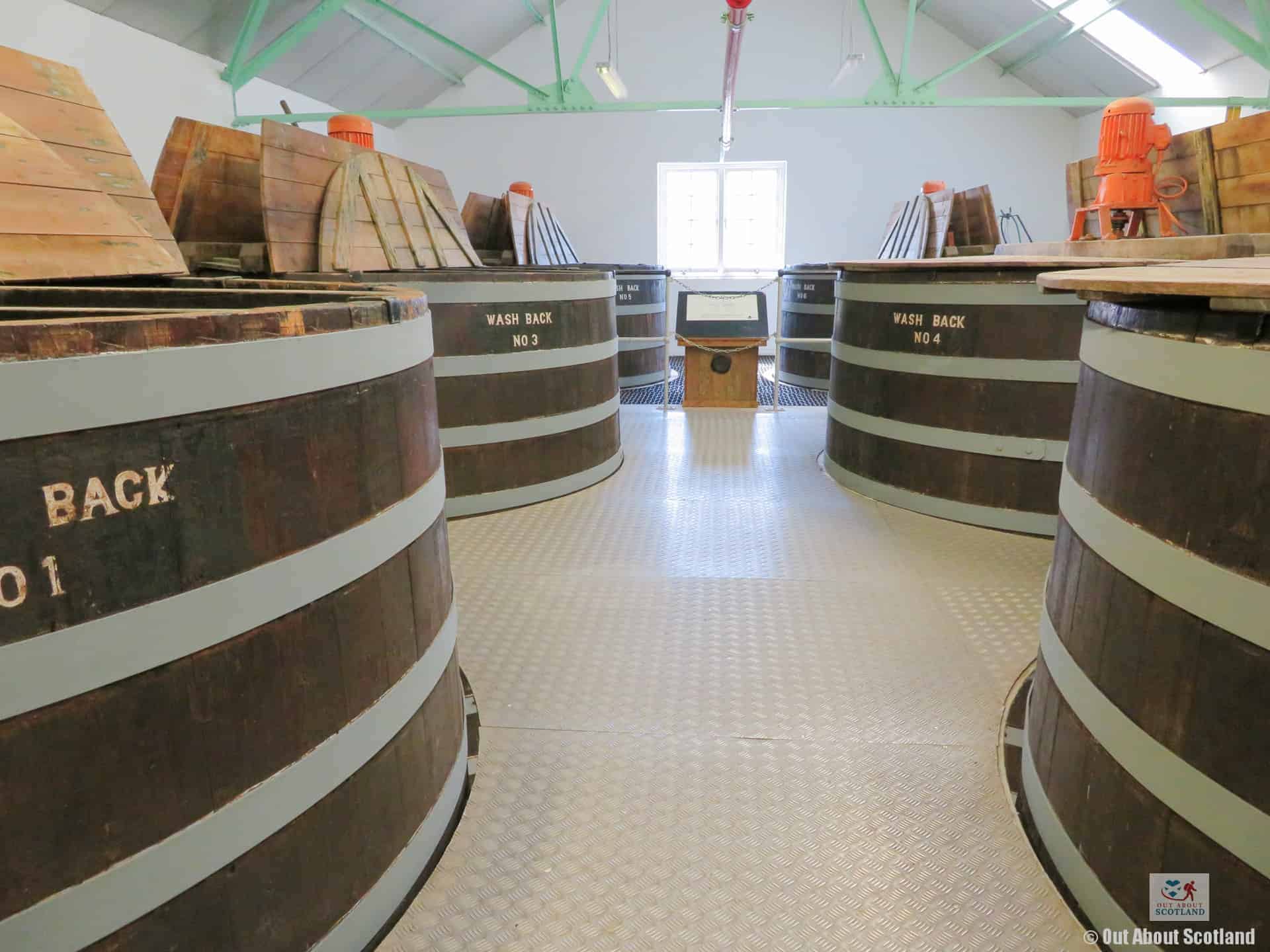
The next stage in whisky production turns the grains into an alcohol liquid in a process called fermentation. The grains are first milled into a coarse flour called grist which is mixed with hot water in a giant tub called the mash tun. The grist is mashed three times with water of increasing temperature, ranging from around 65 °C on the first run to 80 °C on the second and almost boiling on the third.
The liquid from the mash is then syphoned off with the majority being used for distillation while a small portion is re-used for the next batch of grist. The remaining mash is then dehydrated and made into animal feed for resale to farms.
As the liquid from the mash tun cools down, yeast is added which creates a liquid called wort. The wort is stored for around four days in wooden (and more recently stainless steel) containers called washbacks where the fermentation of the alcohol is allowed to finish.
After two to four days the liquid finishes fermenting and is now in a stage called wash which has an alcohol content of about 8%. At this point, the liquid is ready to be distilled inside the giant copper still pots that we’ll see in the next step.
Step 3. Distillation
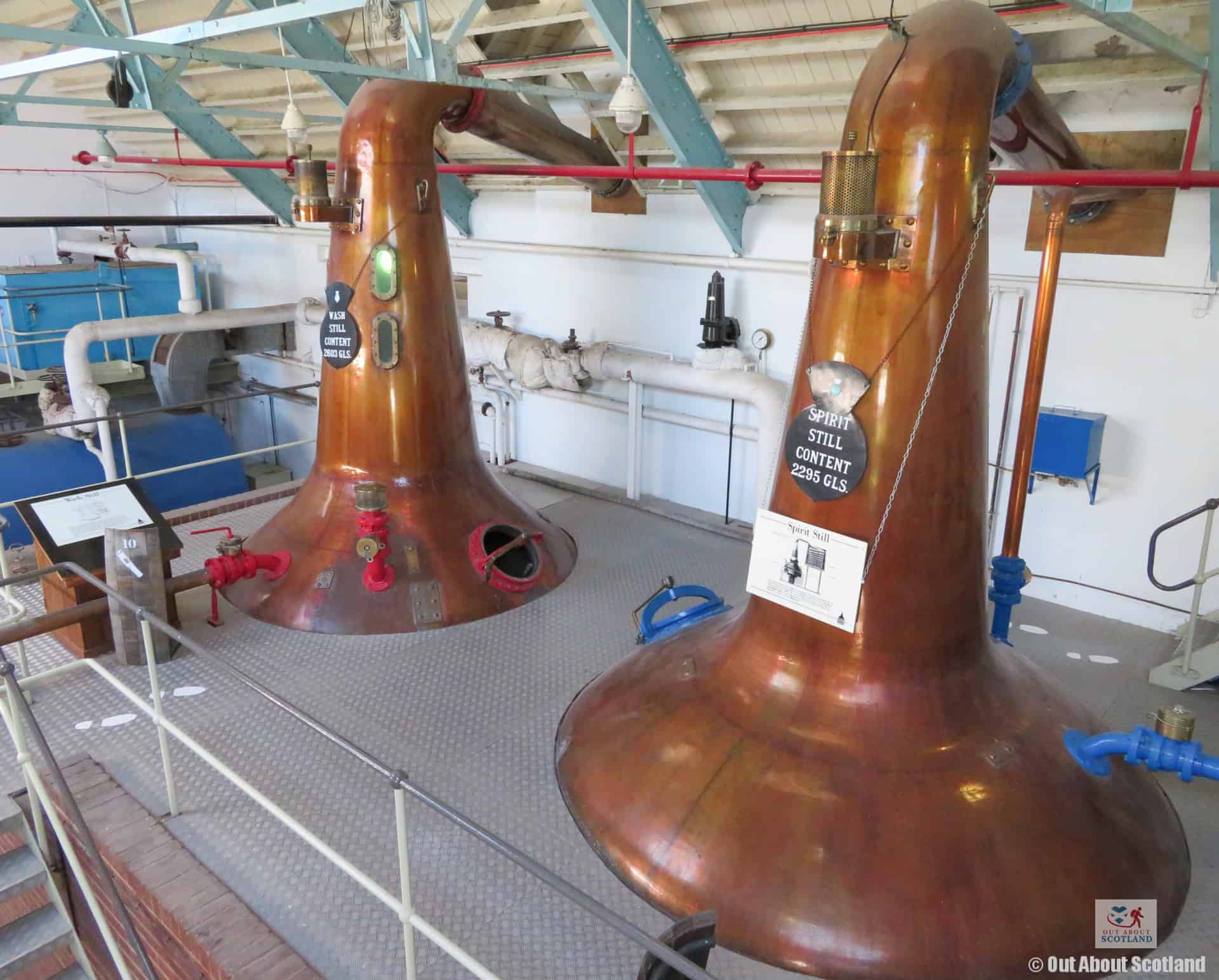
As the wash is poured into the copper still, it’s heated from both below and inside with hot steam which causes the alcohol inside the wash to evaporate, leaving behind the water. As the evaporated alcohol continues to rise it enters a tapered tube in the still where it then passes through a condenser which turns it back into a liquid which then flows into a second pot still.
The first still, known as the wash still, produces an alcoholic liquid (called low wine) at 20 to 25% alcohol content, whereas the second still (the spirit still), further refines the alcohol content to around 70%. The wash and spirit stills are usually made in different sizes to accommodate the different quantities of liquid they have inside them, so while the lower-alcohol wash still might hold up to 30,000 litres of liquid, the spirit stills typically only hold 10,000 litres.
These huge copper stills are made almost entirely by hand, with each replacement being fashioned into a replica of its predecessor. It’s said that any change to a still will change the taste of the finished product, a theory that gave rise to the myth that when a still is replaced the manufacturer even replicates the dents and scratches in the old still.
If you ever find yourself on a distillery tour be sure to take a good look at the still that’s in use as its shape is one of the contributing factors that gives the whisky its unique taste. Lighter flavours such as Glenmorangie are produced from long and slim stills, while intense flavours like Laphroaig are the product of short, squat stills.
But an even more crucial component in the taste of single malt is the next stage in the process – the casking.
Step 4. Filling the Casks
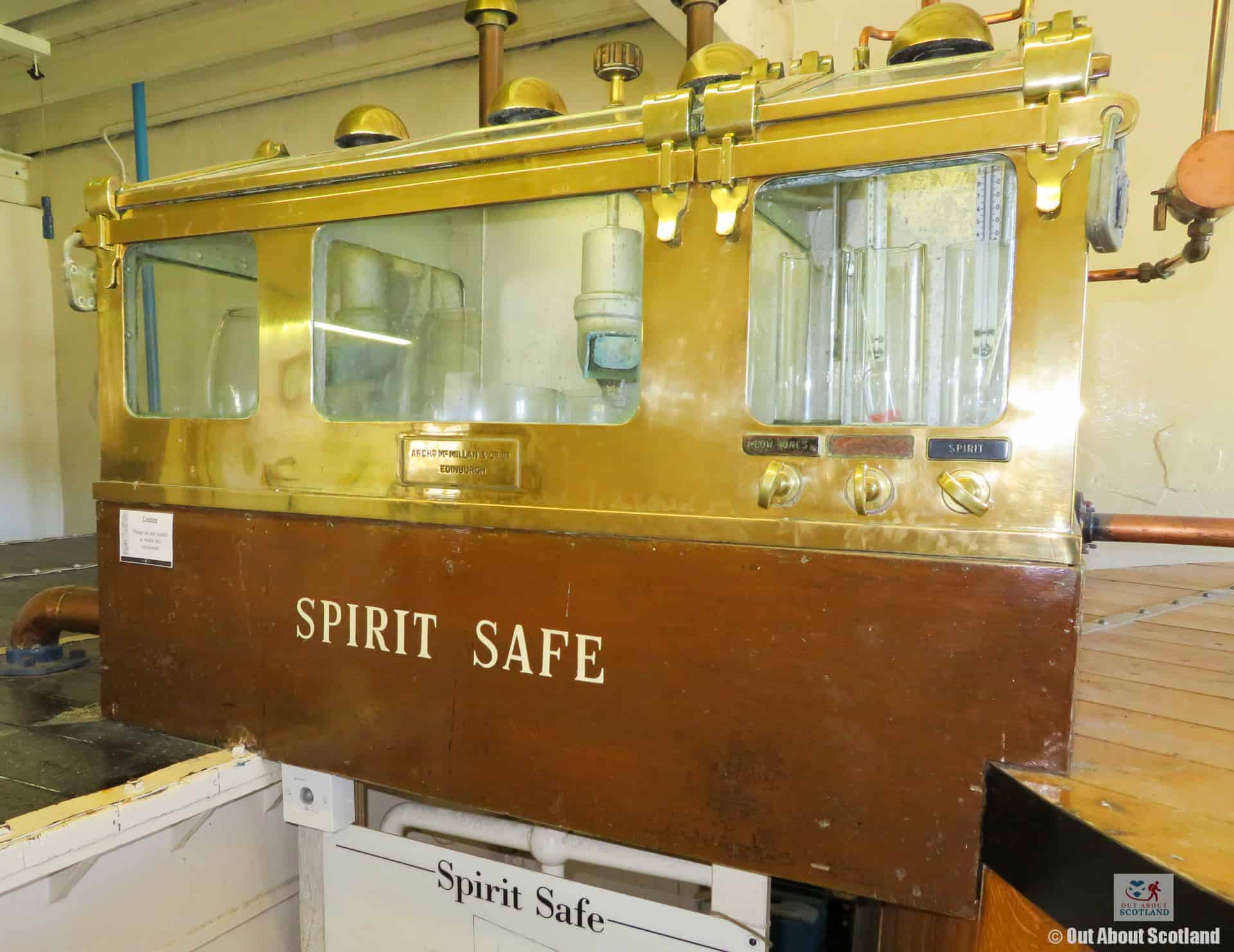
The clear alcoholic liquid from the spirit still can’t be called Scotch whisky just yet, at least not until it’s spent a minimum of three years maturing inside an oak cask in a Scottish warehouse. As the liquid from the spirit still is syphoned off, it passes through a series of valves and tubes inside a sealed compartment known as the spirit safe.
It’s from there that the spirit is cut into three extractions, with the first (or foreshot) considered the lowest quality spirit, the second (or middle cut) being the best, and the third (called the feints) being returned to the spirit still.
As the middle cut is left to mature in the cask it will take on some of the flavour and colour that the cask has absorbed from its previous use, which is why you’ll see labels like ‘Sherry matured’ or ‘Bourbon matured’ on many bottles of single malt. The casks themselves come mainly from the US Bourbon whiskey and Spanish Sherry industries, with Spanish Oloroso casks being particularly highly prized.
Step 5. Maturation in the Cask
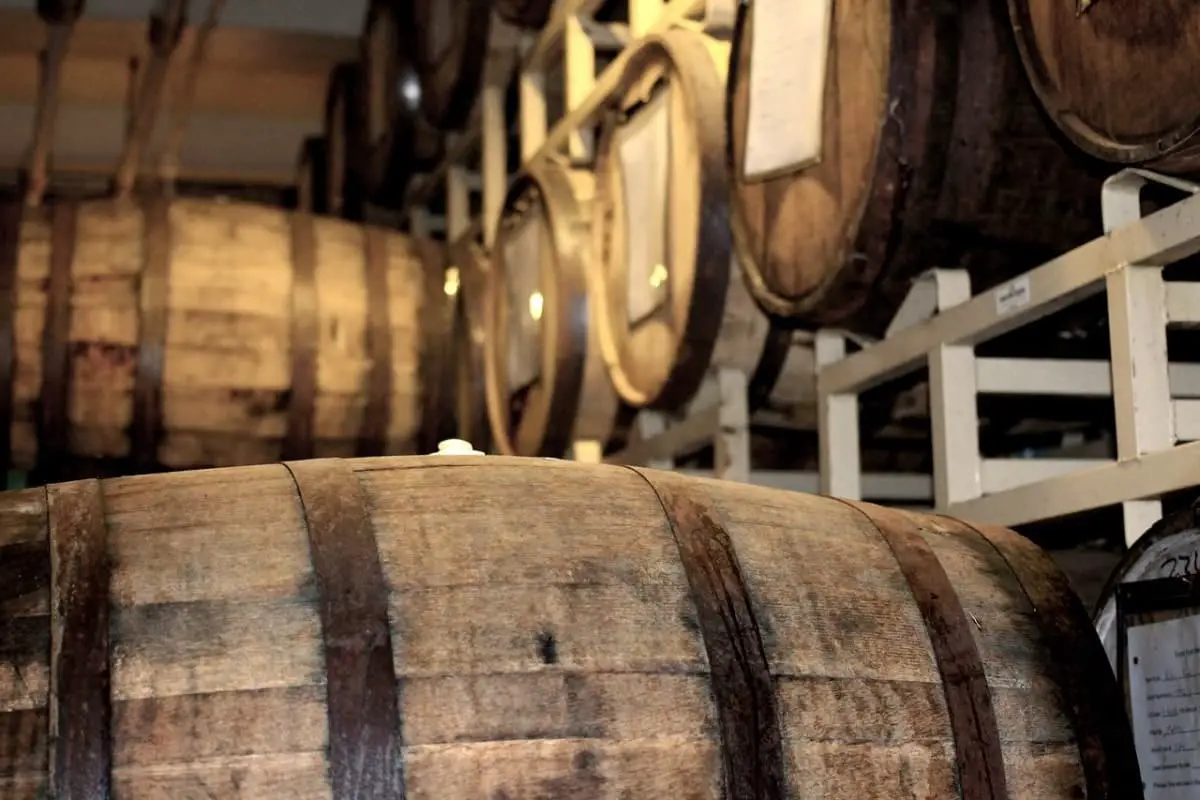
The final stage in the process of turning barley grain into whisky is allowing the alcohol to sit in warehouses to let it absorb the rich oils and flavours that are in the oak casks. These casks are left to their own devices for three or more years, with the finest whiskies left for eighteen years or longer.
You might be wondering why the finished whisky isn’t simply decanted into bottles after three years and then left to sit on a shelf to mature, but the reason is that as soon as the liquid is bottled, it can no longer absorb the qualities of the cask, which means it has officially stopped maturing. So a bottle of three-year-old mature whisky that has sat on a shelf for eighteen years will always be known as a three-year-old whisky.
An interesting fact about this stage concerns the disappearance of several litres of alcohol from each cask during its lifetime. When the whisky is initially poured into the cask it has an alcohol content of around 65%, and as the oak cask breathes it allows some of this alcohol to evaporate. In fact, for each year that the whisky sits in the cask, the quantity of the fluid inside decreases by an average of 2%.
Thankfully, as the whisky matures it takes on a mellower flavour that becomes more valuable to the consumer, so this loss of whisky (known as the angel’s share) doesn’t lead to a loss in revenue for the distillery.
The final stage in the process is for the whisky to be bottled and sold to retailers worldwide, at which point the likes of you and I can finally get our hands on it (as you’ll see in the following list of my favourite single malt’s from Amazon).
Frequently Asked Questions
Where did Scotch Whisky originate?
The first written record of whisky production in Scotland dates back to 1494 in the Exchequer Rolls, a legal document which mentioned a monk named Friar John Cor who was distilling whisky in Lindores Abbey in the county of Fife. This ancient form of whisky, known as ‘usquebaugh’ or ‘water of life’, was very potent and not aged in casks, unlike modern whisky.
The first distillation techniques are believed to have been brought to Scotland by Irish monks around the 5th or 6th century, and the process was refined over the centuries into the whisky we know today.
What is the oldest Scotch whisky in the world?
As many whisky bottles are kept in private collections it’s difficult to say what is the oldest Scotch, but the oldest Scotch whisky available for purchase is the Mortlach 75 Years Old by Gordon & MacPhail.
This whisky was distilled in 1939 and bottled in 2015, making it 75 years old at the time of bottling. It’s considered one of the rarest and oldest single-malt Scotch whiskies ever bottled and currently retails for over £40,000 a bottle.
What is the oldest distillery in Scotland?
The oldest whisky distillery in Scotland, and also one of the oldest in the world, is the Glenturret Distillery. Situated in the Highlands, Glenturret has been legally producing whisky since 1775. However, there is evidence that illicit distillation was likely taking place on the site as far back as the early 1700s.
What is the difference between Scotch whisky and bourbon?
Scotch whisky and bourbon are both popular types of whisky, but they have several key differences due to their geographical origin, ingredients, and production methods:
Geographical Origin: As their names suggest, Scotch whisky (often just called ‘Scotch’) is made in Scotland, while bourbon is a type of American whisky that’s mainly produced in Kentucky.
Ingredients: Scotch is made primarily from malted barley. There are different types of Scotch whisky, like single malt (made from 100% malted barley in one distillery) and blended (a mix of malt and grain whiskies). Bourbon, on the other hand, must be made from a grain mixture that’s at least 51% corn.
Distillation and Aging Process: Scotch is typically distilled twice, while bourbon is distilled at a lower proof, preserving more of the grain flavours. Scotch must be aged in oak barrels for a minimum of three years, while bourbon must be aged for at least two years in new, charred oak barrels.

